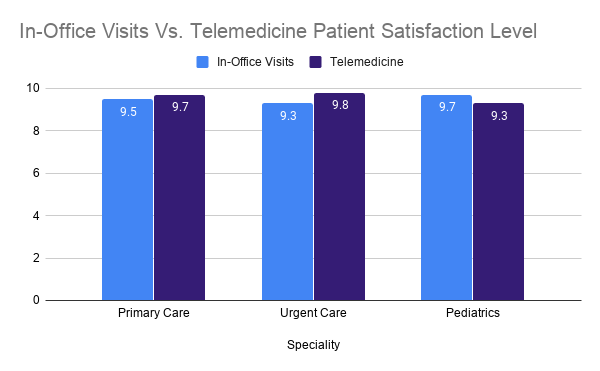
Telemedicine has become the only option for visiting a physician for a large number of patients during the current COVID-19 crisis. We at RepuGen have seen a substantial percentage increase in telemedicine treatments by our clients. We looked at the satisfaction data of telemedicine vs. in-office visits, and the preliminary data suggest that patient satisfaction with their telehealth visits was higher than compared to office visits for two of the three specialties.
In our survey, we compared the patient satisfaction level of telemedicine and in-office visits. We send a questionnaire to the patients who visited their healthcare providers in person or virtually through telemedicine. They had to rate their experience on a scale of 0-10 (10 = most satisfied). The questionnaire was sent through our proprietary software RepuGen and data was also collected through it.
We analyzed the data for three specialties, where the sample size was sufficient to give us a reasonable indication – primary care (472), urgent care (28), and pediatrics (15). The data shows that primary care and urgent care patients are highly satisfied with the telemedicine experience, both groups giving a score of 9.7 and 9.8, respectively. In the pediatrics section, there was a decrease in the patient satisfaction level of telemedicine visits when compared to in-office visits.

Initial data suggests that patient satisfaction with telemedicine is on par with in-office visits. The satisfaction level varies by specialization, but in every case, it shows a broad acceptance.
We are cautious about these numbers because patient satisfaction depends on whether healthcare providers are meeting their expectations, which may be reasonably low, given the current crisis. “New Normal” has become a cliché during the current crisis, but telemedicine could become a significant portion of healthcare delivery even after the crisis is over. RepuGen is monitoring the incoming data and will share the trend on these and other specialties in our upcoming blogs.
COVID-19: How RepuGen Can Help Overcome Google’s Review Limitations
0 Comment
Your email address will not be published. Required fields are marked *